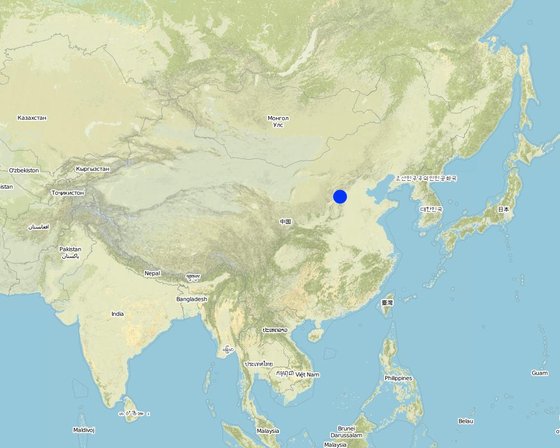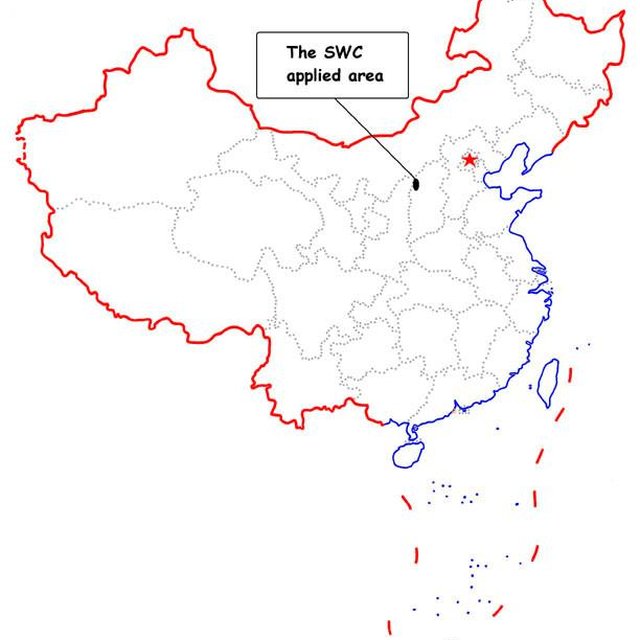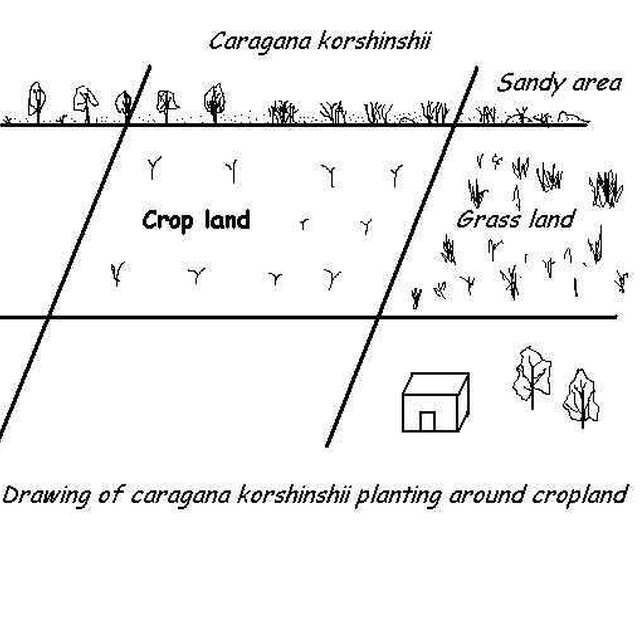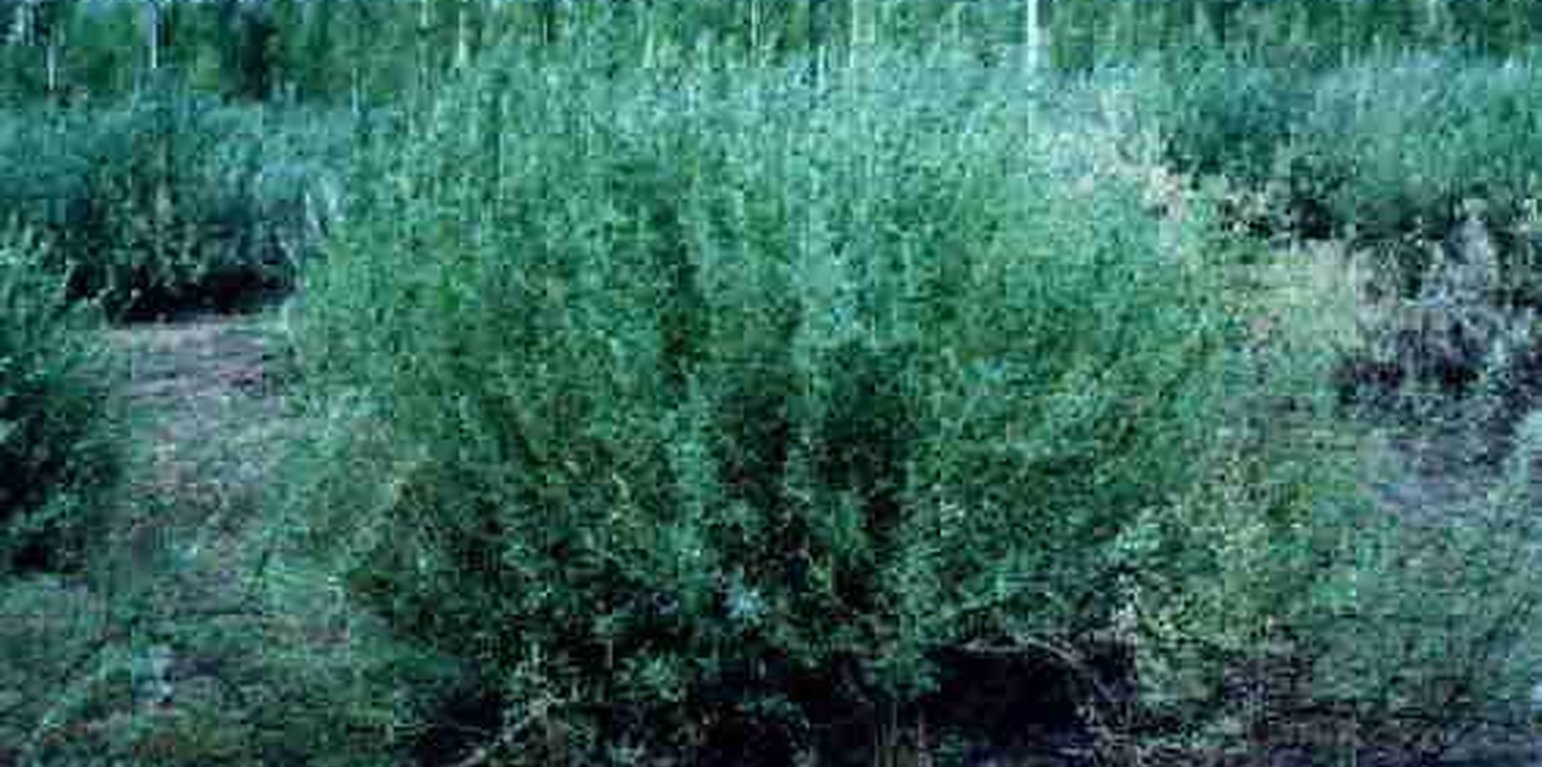Caragana Korshinskii Planting - a SWC vegetation technology
(Китай)
Описание
SWC decision makers, I.e. approach planners, lead local people to plant caragana korshinskii in the areas of serious water and/or wind erosion by means of combined inputs from government, locals and social loan etc.
Aims / objectives: The most important factor that hinders agricultural development in the Loess Plateau is soil and water loss. Many measures have been taking to conserve soil and water resources. Here is one of them using caragana korshinskii as one kind of SWC vegetation approach.
Methods: With its long roots, caragana korshinskii can improve soil infiltration and extract water from deep soil layer. It can also protect soil from water and wind erosion because it is tightly fixed in the soil. It has rhizobium in its roots to improve soil fertility. Besides, its branch has economic value. To carry out this approach, planners lead local farmers to plant caragana korshinskii in the areas of the serious water and/or wind erosion. Before planting, dipping selected seeds in brine with 1% concentration, and then moving them in warm water for about 24 hours to make them easier germinating. Caragana korshinskii can be planted in holes. Autumn is the best season for seeding, but if there is much rain in Spring, it is also ok. In the first three years, young plants are very frail. They should be protected from sheep eating and cutting. After four years, the branches of caragana korshinskii above ground can be cut according to their utilization. The more you cut the better they grow.
Role of stakeholders: Besides government leaders, local land users are also the most important participants, they accomplish most of planting and maintaining work. The Research Institute is another key participant, they provide the SWC knowledge and technology.
Other important information: Caragana korshinskii has many other advantages besides ecological benefits. It has many economic values, such as supplying forage for sheep and fuel for local residents, supplying raw material for paper making, supplying green manure and improving soil quality. Finance is mainly from government, partially from loan and local input(labor).
Местоположение

Местоположение: Shanxi, Китай
Географическая привязка выбранных участков
Дата ввода в действие: 1960
Дата завершения: н/п
Тип Подхода
-
традиционная/ местная система землепользования, используемая коренным населением
-
недавняя местная инициатива/ инновация
-
в рамках проекта/ программы

Area of the caragana korshinskii appication in the Loess Plateau.

Drawing of caragana korshinskii planting in the Loess Plateau.
Цели подхода и благоприятные условия для его реализации
Главные цели/ задачи Подхода
The Approach focused mainly on SLM with other activities (Sheep forage, paper making, fuel, green manure etc.)
Controlling water and/or wind erosion, preventing sand and dust storm.
The SLM Approach addressed the following problems: Water and/or wind erosion, inadequate fodder, poor local agricultural and economic development.
Caragana korshinskii is one of the most drought endurable shrubs. Once planted, caragana korshinskii grows very fast.
Условия, содействующие применению Технологии/ Технологий в рамках Подхода
Условия, затрудняющие применение Технологии/ Технологий в рамках Подхода
-
Социальные/ культурные/ религиозные нормы и ценности: People there seldom care about the environment
Treatment through the SLM Approach: Education, propagandizing
-
Наличие/ доступность финансовых ресурсов и услуг: There is not enough money
Treatment through the SLM Approach: National subsidy, loan, collecting money from public
-
Нормативно-правовая база (землевладение, права на земле- и водопользование): Lack of corresponding acts
Treatment through the SLM Approach: Enforcing legislation
The existing land ownership, land use rights / water rights hindered a little the approach implementation The state has ownership of the land resources, land users can only lease the land for a period of time, they worry about their land would be transferred to others.
-
Осведомленность в области УЗП, доступность технической поддержки: inadequate
Treatment through the SLM Approach: Learn from SWC specialists, introduce into new acquainted person
Участие и распределение ролей заинтересованных сторон
Заинтересованные стороны, участвующие в реализации Подхода, и их роли
| Какие заинтересованные стороны/ организации-исполнители участвовали в реализации Подхода? |
Перечислите заинтересованные стороны |
Опишите роли заинтересованных сторон |
| местные землепользователи/ местные сообщества |
Working land users were work equally divided between men and women (including all the local land users and government politicians)
Existing groups of land users |
|
| государственные власти (отвечающие за планирование или принятие решений) |
|
|
Участие местных землепользователей/ местных сообществ на разных стадиях реализации Подхода
нет
пассивное
внешняя поддержка
интерактивное
самоорганизация
мониторинг/ оценка
measurements/observations;
Research
measurements/observations;
Принятие решений по выбору Технологии УЗП
Решения принимались
-
исключительно землепользователи (по собственной инициативе)
-
в основном землепользователи при поддержке специалистов по УЗП
-
все участники как часть процесса совместных действий
-
преимущественно специалисты по УЗП после консультаций с землепользователями
-
исключительно специалисты по УЗП
-
политики/ руководители
Принятие решений было основано на
-
анализ подробно описанного опыта и знаний по УЗП (принятие решений на основе подтвержденных фактов)
-
результаты исследований
-
личный опыт и мнения (незадокументированные)
Техническая поддержка, повышение компетенций и управление знаниями
Следующие мероприятия или работы являлись частью Подхода
-
Повышение компетенций/ обучение
-
Консультационные услуги
-
Институциональная (организационная) поддержка
-
Мониторинг и оценка
-
Научные исследования
Повышение компетенций/ обучение
Обучение было предоставлено следующим заинтересованным лицам
-
землепользователи
-
местный персонал/консультанты
-
SWC specialists, extensionists/trainers, planners, politicians/decision makers
Тип обучения
-
в ходе работы
-
обмен опытом между фермерами
-
опытные участки
-
общие собрания
-
курсы
Рассматриваемые темы
seed, establishment and maintenance of Caragana korshinskii
Консультационные услуги
Консультационные услуги были предоставлены
-
на полях землепользователей
-
в постоянно функционирующих центрах
Visiting demonstration areas; Key elements: Quality of the demonstration, Ability of visitors, Ability of hierophants; 1) Advisory service was carried out through: projects own extension structure and agents, government's existing extension system 2) Advisory service was carried out through: projects own extension structure and agents, government's existing extension system; Extension staff: mainly government employees 3) Target groups for extension: land users, technicians/SWC specialists; Activities: farm visits
Advisory service is quite adequate to ensure the continuation of land conservation activities; Activities of government influence the choice of land users greatly, usually by administration ways.
Институциональная поддержка
Какие институциональные структуры были укреплены или вновь созданы
-
нет
-
да, немного
-
да, умеренно
-
да, существенно
на уровне
-
местные
-
региональный
-
национальный
Опишите организацию, функции и ответственность, членство и т.д.
Тип поддержки
-
финансовая
-
повышение компетенций/ обучение
-
оборудование
Подробнее
Мониторинг и оценка
bio-physical aspects were regular monitored by 0 through measurements; indicators: None
technical aspects were ad hoc monitored by 0 through observations; indicators: None
economic / production aspects were regular monitored by 0 through measurements; indicators: None
management of Approach aspects were None monitored by 0 through observations; indicators: None
There were few changes in the Approach as a result of monitoring and evaluation: planting density, frequency of caragana korshinikii branch cutting.
Научные исследования
Научные исследования проводились по следующим темам
-
социология
-
экономика / маркетинг
-
экология
-
технология
comparing Caragana korshinskii with other kind of SWC vegetation species.
Research was carried out on station
Финансирование и внешняя материальная поддержка
Годовой бюджет мероприятий по УЗП в долларах США
-
< 2000
-
2000-10000
-
10000-100000
-
100 000-1 000 000
-
> 1 000 000
Precise annual budget: н/п
Approach costs were met by the following donors: government (national - money, technology, planning): 25.0%; national non-government (money): 45.0%; local community / land user(s) (material, money, labor): 30.0%
Землепользователям были оказаны/предоставлены следующие услуги или меры стимулирования
-
Финансирование и внешняя материальная поддержка, предоставляемая землепользователям
-
Субсидии на отдельные затраты
-
Кредитование
-
Другие методы или инструменты стимулирования
Финансовая/ материальная поддержка, предоставленная землепользователям
профинансированы частично
профинансированы полностью
сельскохозяйственные: удобрения
seedlings and biocides
biocides are fully financed
Трудозатраты, вложенные землепользователями были
-
добровольный
-
в обмен на продукты
-
за денежное вознаграждение
-
в обмен на другие материальные ресурсы
Заём/кредит
-
Условия: Interest rate charged: 0.7%
Interest was lower than market rate.
-
Кредиторы: н/п
-
Заёмщики: н/п
Анализ влияния и заключительные положения
Влияние Подхода
Нет
Да, немного
Да, умеренно
Да, существенно
Сумел ли Подход помочь землепользователям внедрить и поддерживать технологии УЗП?
They protect their cropland by applying vegetative measures such as planting caragana koshinskii around the land so that both increasing crop yield and additional income by feeding more sheep etc.
Сумел ли Подход разрешить правовые проблемы землевладения/ землепользования, препятствующие использованию технологий УЗП?
The approach could very little on it.
The problem is likely to be overcome in the near future. By signing land use contract with land ownership.
Did other land users / projects adopt the Approach?
As one kind of vegetation method, it can be used with other approaches, such as check dam.
Основные причины, побуждающие землепользователей внедрять УЗП
Долгосрочная устойчивость мероприятий в рамках Подхода
Могут ли землепользователи самостоятельно (без внешней поддержки) продолжать применение того, что было реализовано в рамках Подхода?
Заключительные положения и извлечённые уроки
Сильные стороны: по мнению землепользователей
-
Obtaining additional economic return (How to sustain/ enhance this strength: Developing Stockbreeding and increasing crop yield.)
-
low input and easy to implementing (How to sustain/ enhance this strength: Forbidding overgrazing and cutting.)
Сильные стороны: по мнению составителя или ответственных специалистов
-
Reducing wind and water erosion (How to sustain/ enhance this strength: Scientific design and management.)
-
simple SWC and easy to carry out (How to sustain/ enhance this strength: Enhancing training of how to scientifically planting caragana korshinskii.)
-
marked economic benefits that farmers would like to do (How to sustain/ enhance this strength: Further developing the variable uses of caragana korshinskii.)
-
Preventing sand and dust storm in the leeward region. (How to sustain/ enhance this strength: Enlarging planting areas and combining with other SWC measures.)
Слабые стороны/ недостатки/ риски: по мнению землепользователейвозможные пути преодоления
Слабые стороны/ недостатки/ риски: по мнению составителя или ответственных специалистоввозможные пути преодоления
Справочные материалы
Продолжительность применения Технологии: 28 января 2009 г.
Последнее обновление: 9 июля 2017 г.
Ответственные специалисты
-
Jinsheng FU (baoyuan+changeme3@bnu.edu.cn) - Специалист по УЗП
-
Mingshu Xie - Специалист по УЗП
Полное описание в базе данных ВОКАТ
Документирование осуществлялось при участии
Организация
- Department of Resources and Environmental Science, Beijing Normal University (Department of Resources and Environmental Science, Beijing Normal University) - Китай
Проект
Ключевые ссылки
-
Yang Wenbin, Ren Jianmin, Jia Cuiping. Studies of The Relationship Between Physiological Ecology of Drought-Resist in Caragana Korshinskii and Soil Water. Acta Ecologica Sinica. 1997,17(3): 239-244.: Library of Department of Resources and Environment, BNU.
-
Hu Xuewen. Marked benefits of developing Caragana korshinskii in Pianguan county. Economic benefits corpus of soil and water conservation. 1987.10: 43-44.: Library of Department of Resources and Environment, BNU.
-
Li Zhirong. To advocate for Caragana korshinskii. Economic benefits corpus of soil and water conservation. 1987.10: 36-38.: Library of Department of Resources and Environment, BNU.
-
Zhao Zhizhong. Planting Caragana korshinskii extensively, breeding livestock to reach richness. Soil and Water Conservation Science and Technology in Shanxi. 1997.3: 26-28.: Library of Department of Resources and Environment, BNU.
-
Niu Xiwu. The distribution and description of Caragana Fabr. In China. Acta Bot. Boreal. Accident Sin. 1999,19(5): 107-133.: Library of Department of Resources and Environment, BNU.
-
Pan Ming, Zhao Jinrong. Benefits of Caragana korshinskii and its planting technology. Economic benefits corpus of soil and water conservation. 1987.10:39-42.: Library of Department of Resources and Environment, BNU.
-
Cheng Jimin. The Reasonable Utilization and Patterns of the Main Shrub Species In Southern Ningxia Hui Autonomous Region. Bulletin of Soil and Water Conservation. 1991,11(1): 54-61.: Library of Department of Resources and Environment, BNU.
-
Li Jinchuan, Wang Wenying, Lu Chongen. Exploration on Restoring Vegetations of Dump Land on An-Tai-Bao Surface Mine. Henan Science. 1999,17(Suppl.): 92-95.: Library of Department of Resources and Environment, BNU.
-
Bai Yongqiang. Studies on Phonological Patterns of the Main Shrubs in Yanchi Sandy Land. Journal of Arid land Resources and Environment. 1998,12(2): 82-86.: Library of Department of Resources and Environment, BNU.






